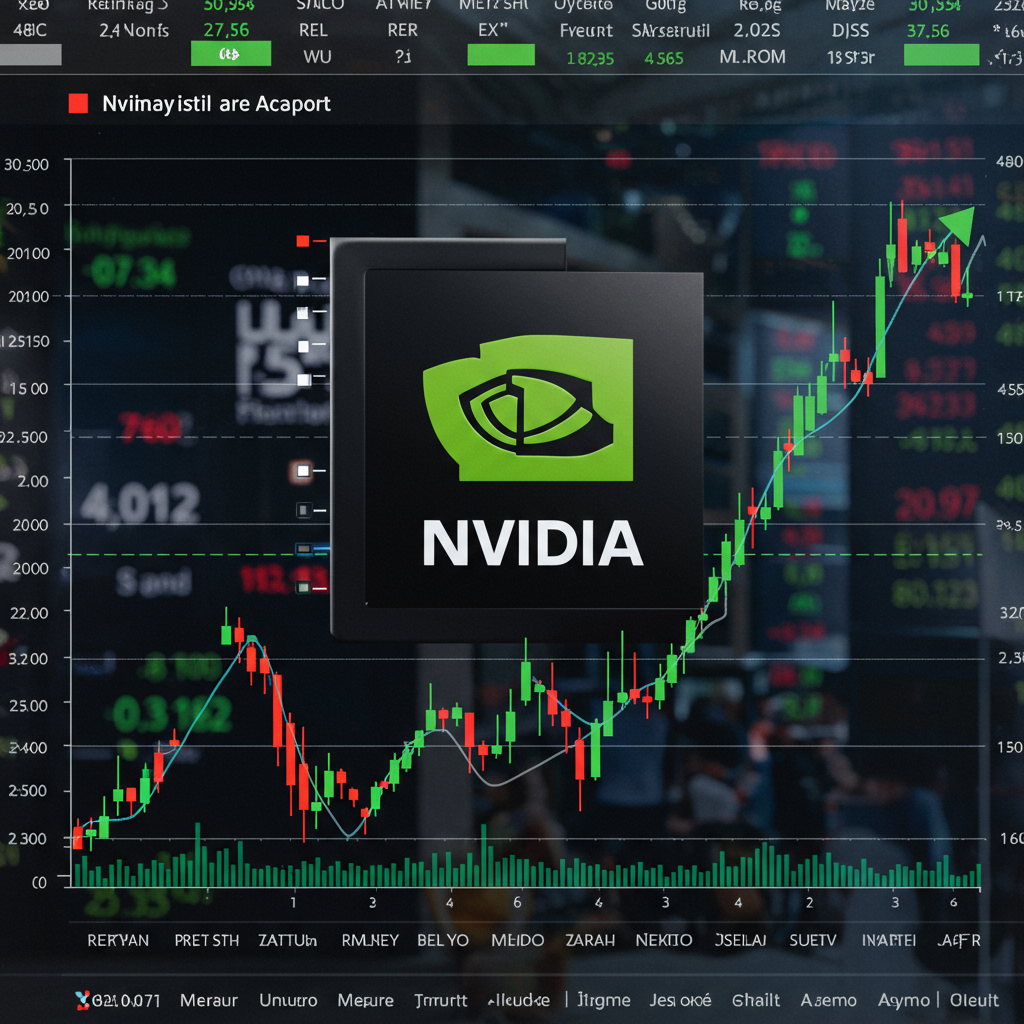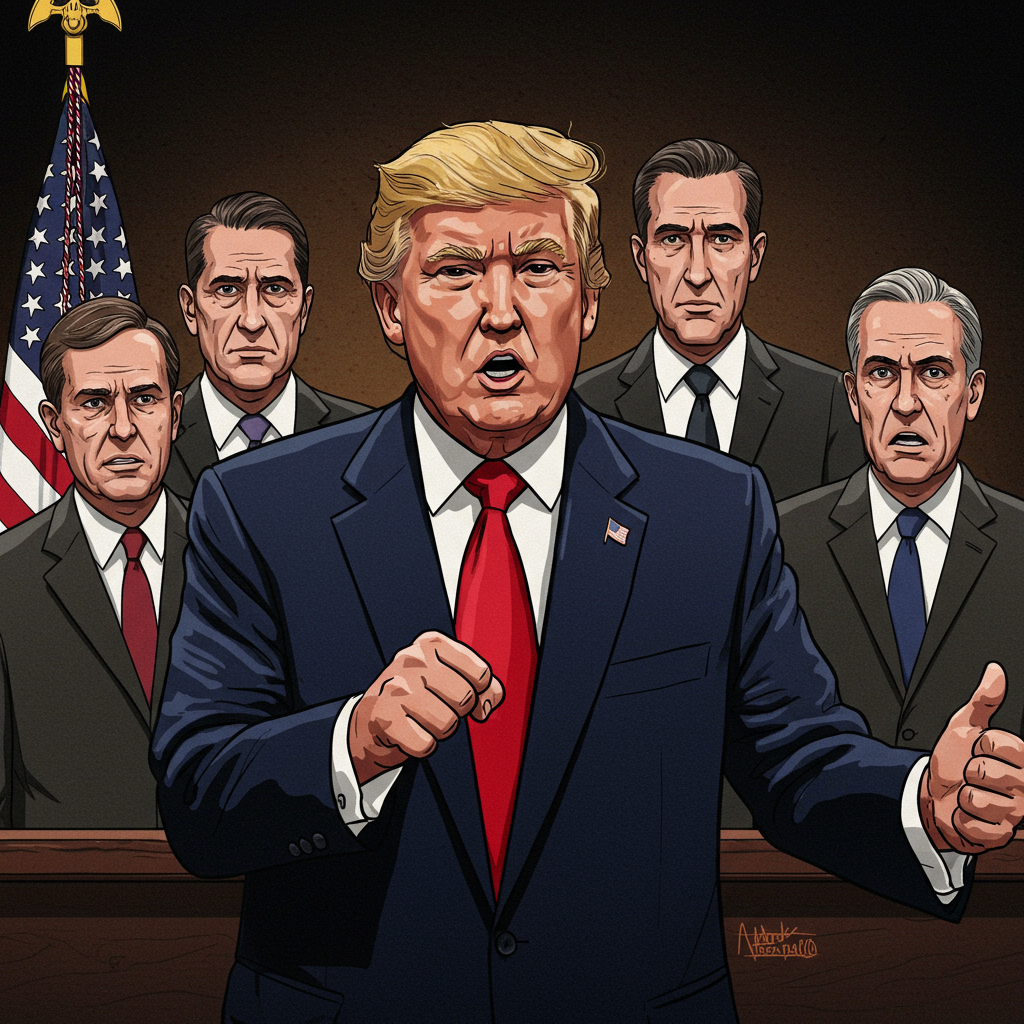Wall Street concluded June 2025 on a high note. Major indexes reached record levels. A significant corporate milestone grabbed headlines. Chipmaking giant Nvidia Corporation (NVDA) reclaimed its position. It became the world’s most valuable publicly traded company. This surge capped a powerful market rebound. Investors shook off earlier tariff concerns. Optimism returned driven by easing global tensions and positive trade news.
Nvidia’s Ascent to $3.85 Trillion
Nvidia’s market capitalization soared. It reached a staggering $3.85 trillion. This valuation propelled the AI-chip leader past Microsoft Corp. (MSFT). It secured the top spot for corporate value. This wasn’t the first time recently these two tech titans vied for the lead. Nvidia had briefly surpassed Microsoft earlier in May. The AI sector’s explosive growth fuels this remarkable rise. Analysts point to several key factors driving investor demand for Nvidia stock.
Why Nvidia Stock Is Soaring
Nvidia dominates the artificial intelligence landscape. Its chips are essential for training and running complex AI models. Robust enterprise adoption of AI technologies is a major driver. Data center growth continues at an accelerated pace. Companies globally are investing heavily in infrastructure. They need Nvidia’s powerful GPUs. Analysts also cite Nvidia’s unmatched pricing power in the chip market. The company’s ability to command premium prices boosts its revenue and valuation. Demand for “sovereign AI” – countries building their own AI infrastructure – presents a significant future opportunity. One analysis even highlighted Nvidia’s “staggering per-employee value.” This figure exceeded $90 million. It underscored the unique leverage of its technology and workforce.
Wall Street’s Record Rally Takes Hold
The broader market mirrored Nvidia’s strength. Both the S&P 500 and Nasdaq 100 indices climbed higher. They broke above their previous peaks set in February and December. The S&P 500 notably closed above 6,000 points in early June for the first time since February 21. This strong performance marked the best weekly gains in over a month for major indexes by the end of June. Year-to-date figures also showed solid growth. Through late June, the S&P 500 and Nasdaq Composite were up around 5%. The Dow Jones Industrial Average trailed slightly. It had gained about 3% over the same period. This rally represented a powerful recovery. Markets had experienced a plunge in April. That downturn was primarily driven by concerns over potential tariff policies.
Easing Global Tensions Fuel Optimism
Investor sentiment shifted dramatically. Geopolitical and trade risks eased significantly during June. This calming effect directly supported the Wall Street rally. A key development was the apparent de-escalation of Middle East tensions. A symbolic Iranian strike on a U.S. base in Qatar did not lead to wider conflict. President Donald Trump announced a ceasefire between Israel and Iran. This helped end a 12-day conflict. Assets that had surged as safe havens during the tensions saw reversals. Oil prices, for instance, slumped significantly. WTI crude futures settled around $65 per barrel by late June. Gold prices also dropped to a one-month low.
Positive Signals on the Trade Front
Progress in trade negotiations provided further momentum. Commerce Secretary Howard Lutnick indicated a trade agreement with China had been reached. This built on a framework agreed upon earlier in the month. Officials also signaled positive movement in talks with more than 10 other countries. These discussions aimed for potential deals finalized within weeks. This suggested a softening stance from the White House. Previous protectionist policies had weighed on market sentiment. However, not all trade news was positive. President Trump abruptly announced an end to trade discussions with Canada. He cited Canada’s digital services tax as the reason. He threatened retaliatory tariffs within seven days. This injected a new element of uncertainty.
Federal Reserve Commentary and Rate Expectations
Federal Reserve Chair Jerome Powell testified before Congress. He addressed the economic outlook. Powell noted that tariff hikes implemented earlier in the year were likely to raise prices. He suggested these tariffs could weigh on the overall economy. This warranted caution regarding future interest rate decisions. Powell’s tone was described as neutral. However, it reignited public friction with President Trump. Trump has repeatedly criticized the Fed chair. Speculation continues regarding a potential change in Fed leadership. Powell’s term concludes in May 2026.
Market Anticipates Dovish Pivot
Markets began anticipating a more dovish stance from the central bank. This expectation was partly fueled by speculation over Trump’s potential influence. Traders started pricing in expectations. They foresaw two interest rate cuts before the end of the year. This outlook contributed to persistent U.S. dollar weakness. The U.S. Dollar Index fell to levels not seen since before Russia’s invasion of Ukraine in February 2022. It was heading towards its worst half-year performance since 1991. The prospect of lower borrowing costs typically boosts asset prices.
Corporate Highlights Beyond the Giants
While Nvidia’s milestone dominated headlines, other corporate news influenced markets. Nike Inc. (NKE) shares soared after reporting strong quarterly results. The company detailed plans to mitigate tariff impacts. FedEx Corp. (FDX) faced challenges. Shares fell after the company suspended its full-year outlook. It cited uncertainty over U.S. trade policies impacting air freight demand. Micron Technology (MU) delivered strong results. Booming AI-related data center demand drove its performance.
Lululemon Athletica Inc. (LULU) saw a significant stock drop. This followed a trimmed profit forecast. The company noted cautious U.S. consumer spending. It also mentioned tariff mitigation efforts. Docusign Inc. (DOCU) shares tumbled after missing billing estimates. This was partly attributed to changes related to its shift toward an AI-driven platform. Broadcom Inc. (AVGO) shares fell despite strong results. Its forecast fell short of investors’ high expectations.
Palantir Technologies Inc. (PLTR) experienced swings. Shares surged earlier in the month. This was driven by AI demand and government business growth. Later, they dropped slightly. Easing geopolitical tensions potentially reduced demand for its defense-related software. C3.ai Inc. (AI) saw shares rise significantly. This was fueled by strong results and generative AI demand. Arista Networks Inc. (ANET) shares declined. This occurred after Nvidia mentioned gaining Google and Meta as clients for its Ethernet switches. It raised concerns about competition for Arista.
Trade policy uncertainty directly impacted some companies. HP Inc. (HPQ) and Best Buy Co. (BBY) shares tumbled. Both cited increased costs and impacts from tariffs. Boeing Co. (BA) shares rose on news of aircraft deliveries resuming to China. This suggested it could potentially benefit from a broader trade deal.
Other Market Indicators
Beyond stocks, other market indicators showed movement. The Bitcoin price rebounded strongly. It recovered from lows seen during peak Middle East tensions. It reached around $107,000 by late June. The yield on the 10-year Treasury note saw slight fluctuations. It ended the week around 4.28%. This reflected evolving expectations for interest rates.
Broader Market Context and Outlook
The journey to record highs was described as “rocky.” Markets recovered strongly after April’s tariff-driven dip. Economic data and corporate earnings proved generally encouraging. An emerging factor is the strain on U.S. power grids. A summer heatwave was testing infrastructure. Electricity demand was up significantly from the previous year. While most grids were expected to cope, some regions faced elevated risk during extreme heat. Analysts suggested this could be a long-term positive for utilities. It points to needed investment. However, it also carries near-term headline risk from potential outages. Looking ahead, major tech events like Apple’s Worldwide Developers Conference were anticipated. They promised updates on AI features (“Apple Intelligence”). Upcoming IPOs like Omada Health and recent successful debuts like Circle Internet Group also drew investor interest.
Frequently Asked Questions
Why did Wall Street indexes reach record highs in late June 2025?
Wall Street indexes like the S&P 500 and Nasdaq 100 soared to record highs due to a combination of factors. Easing geopolitical tensions, particularly the ceasefire between Israel and Iran and de-escalation in the Middle East, significantly boosted investor confidence. Progress in trade negotiations, including agreements with China and signals of deals with over 10 other countries, also improved market sentiment. Additionally, strong performance from major technology companies, especially Nvidia’s surge to the world’s most valuable company, contributed significantly to the rally.
What specific companies were impacted by trade or tariff issues discussed in the market wrap-up?
Several companies reacted directly to trade and tariff news. HP Inc. and Best Buy both lowered their outlooks, citing increased costs and impacts from tariffs imposed by the Trump administration. FedEx suspended its full-year guidance, partly due to trade policy uncertainty affecting air freight. Lululemon mentioned tariff mitigation efforts in its earnings report. Nike also detailed plans to mitigate potential tariff costs through production changes and price increases. Boeing saw its shares rise on news of aircraft deliveries resuming to China, viewed as a potential long-term beneficiary of easing trade tensions.
How did market expectations for Federal Reserve interest rates change during this period?
Market expectations shifted towards anticipating potential interest rate cuts. Following Federal Reserve Chair Jerome Powell’s testimony, which noted the potential inflationary and economic drag from tariffs, and amidst ongoing friction between Powell and President Trump suggesting potential future changes in Fed leadership towards a more dovish stance, traders began pricing in expectations for two rate cuts before the end of the year. This outlook led to significant weakness in the U.S. dollar, with the U.S. Dollar Index falling to levels last seen before February 2022.



